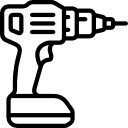- اتو لوله سبز
- اره پروفیل بر
- اره عمودبر (اره چکشی)
- اره فارسی بر
- اره گرد (اره دیسکی)
- اره مویی
- اره میزی
- اره نواری (گوشت بری)
- اره همه کاره (افقی بر)
- ابزار چندکاره
- بالابر برقی
- بتن ساب و موزایک ساب
- بکس برقی
- پیچگوشتی برقی
- پیستوله برقی
- بیسکویت زن
- چکش تخریب
- دمنده/مکنده (بلوور)
- دریل بتن کن
- دریل ساده (سرکج)
- دریل ستونی
- دریل ضربه ای/چکشی
- دریل مغناطیسی (مگنتی)
- دریل نمونه بردار (کرگیر)
- دستگاه جوش
- رنده و فرز نجاری
- سنباده برقی
- سشوار صنعتی
- سنگ دوطرفه (چرخ سنباده)
- سنگ و پولیش
- شیارزن و مرمربر
- فرز مینیاتوری
- فرز انگشتی
- میخکوب و منگنه کوب
- مینی سنگ
Practical Strategies to Prevent Frozen Pipes During Cold Winter Months
As the temperatures drop, the concern for maintaining a stable water system increases. One key practice to ensure a smooth flow is through proper temperature monitoring. By keeping a close eye on indoor and outdoor conditions, homeowners can take proactive measures to avoid unfortunate disruptions.
In addition to monitoring, implementing smart heating strategies across the premises can significantly reduce the risk of ice formation in piping. Insulating water lines, using space heaters in vulnerable areas, and adjusting thermostat settings are just a few ways to safeguard against the harsh winter chill. For more information on maintaining your plumbing this season, visit this resource.
Insulate Exposed Pipes in Vulnerable Areas
One of the most effective measures to combat cold weather issues is to utilize various insulation methods for exposed plumbing. Such areas are often inadequately shielded, making them susceptible to dramatic drops in temperature. By wrapping these pipes with foam sleeves or insulating tape, you can significantly reduce the risk of potential ruptures and future emergency response situations.
Implementing smart heating strategies can further enhance pipe protection. Maintain warmth in spaces where vulnerable plumbing is located. For example, letting a faucet drip can relieve pressure and keep water flowing, which helps mitigate freezing conditions. Remember to incorporate proper outdoor hose management practices, ensuring that all garden hoses are disconnected and stored away safely, minimizing the chances of any unexpected damage.
Pipe sealing is another crucial aspect that complements insulation efforts. Inspect areas around fittings and valves to prevent drafts from affecting pipe integrity. This attention to detail can be the difference between a secure plumbing system and an inconvenient freeze.
By taking these proactive steps, you can ensure that your water supply remains intact throughout the colder months, protecting your home from potential costly repairs. Regular maintenance and vigilance are key components of a seamless winter experience.
Maintain Consistent Indoor Temperatures
Ensuring a steady indoor climate is key to safeguarding your plumbing system. Sudden temperature dips can lead to significant risks. Maintaining warmth in all parts of your home is essential for preventing issues with your water lines. Generally, it’s advisable to keep the thermostat set to a minimum of 55°F (13°C) to avoid potential complications. For those in colder regions, professional assistance can help you implement effective heating strategies suited to your home.
Claim your free spins on https://buddykingplumbing.com/ and boost your winnings.
Regular temperature monitoring throughout your living space can catch problems early. Consider using smart thermostats that allow you to manage heating remotely. Additionally, keeping a faucet dripping slightly can alleviate pressure in the pipes, reducing the likelihood of ice formation. If you notice rooms that remain chilly, look into insulation methods or pipe sealing solutions to maintain an optimal environment for your plumbing.
Let Faucets Drip to Prevent Pressure Buildup
One simple yet effective method to mitigate the risk of pipe damage is to allow your faucets to drip. This approach helps to relieve pressure within the plumbing system, especially during extremely low temperatures. When water flows, it reduces the likelihood of ice formation, which can cause significant ruptures. For more insights on home maintenance, consider visiting https://buddykingplumbing.com/.
Implementing faucet dripping as a precautionary measure can work hand-in-hand with other heating strategies. By maintaining a steady flow of water, the system can experience less stress, lowering the odds of bursts. Additionally, remember to combine this with proper pipe sealing and insulation methods. Collaborating with professionals can optimize your home’s temperature monitoring and emergency response readiness when colder months arrive.




